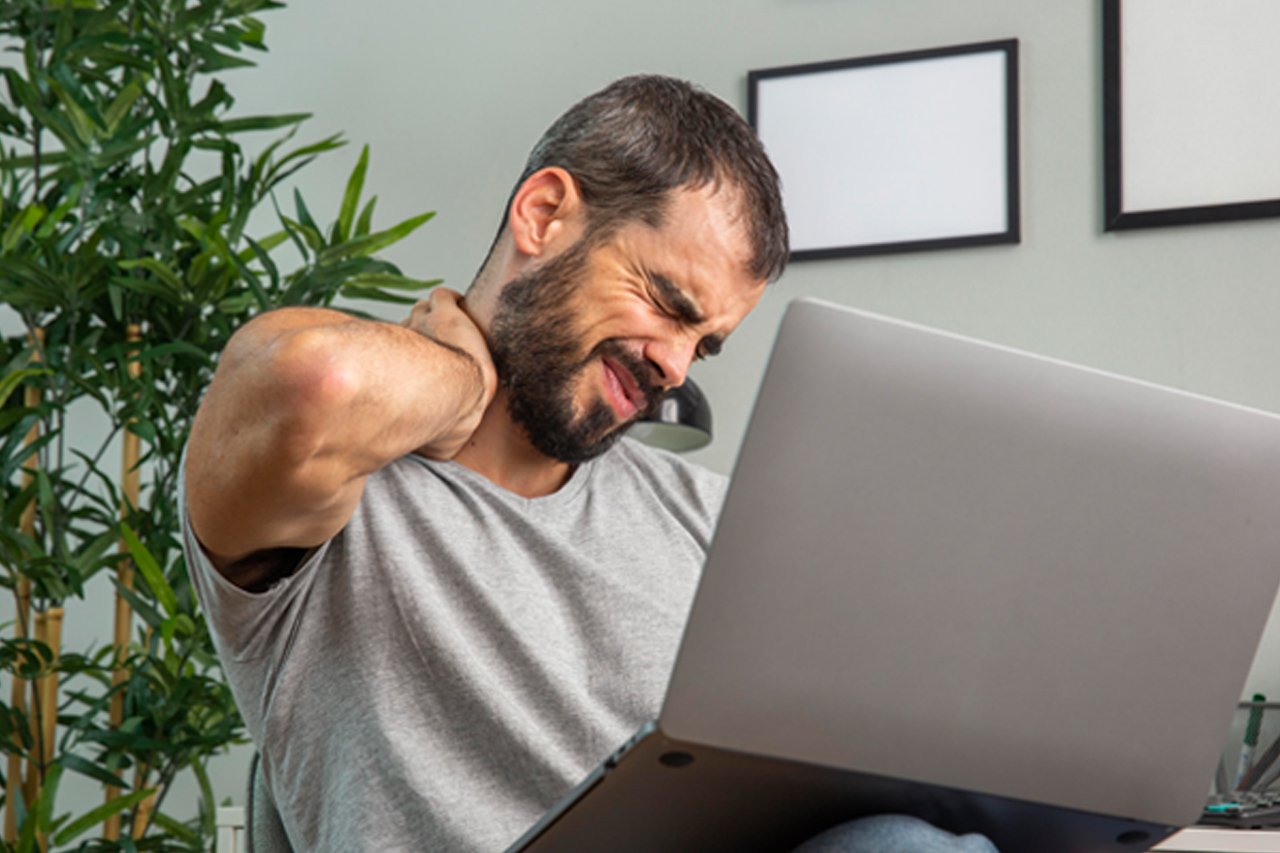Cervical Spondylosis is also called a Cervical osteoarthritis. It is a degenerative condition of cervical spine. That involves changes to bones, discs and joints of the neck. These changes are caused by normal wear and tear of aging. With age, the disc of cervical spine gradually breaks down, lose fluid and become stiffer. Condition is usually found in middle aged people and elderly.
According to Ayurvedic science, Cervical Spondylosis is understood as Greeva graha, and symptoms is much similar to Vishwachi. Both are vata predominant condition; increase in vata leads to depletion of body tissues. The dryness and degeneration caused by vata leads to decrease of kapha dosha, which is responsible for cushioning in between bone joints. Hence degeneration sets in leading to the disease.
Symptoms of Cervical Spondylosis
- Pain and stiffness in neck
- Inability to fully turn the head or bend the neck
- Radiating pain to the shoulder, fore arm or arm
- Numbness
- Head ache
- Grinding noise or sensation when neck is turned
Symptoms of Cervical Spondylosis improve with rest. Symptoms are more severe in morning and evening hours.
If Cervical Spondylosis results in narrowing of the space needed by the spinal cord and nerve roots that pass through the spine to rest of the body, if spinal cord or nerve roots become pinched, following symptoms may occur:
- Tingling, numbness or weakness in the arms, hands, legs or feet.
- Lack of coordination and difficulty in walking
- Abnormal reflexes
- Muscle spasm
- Lack of control over bladder and bowl.
Causes of Cervical Spondylosis
As age progresses, the bone and cartilage that make up backbone and neck gradually develop wear and tear. These changes include:
- Dehydrated disc
Disc acts as cushion between the vertebrae of spine. By the age of 40, most people’s spine discs begin drying out and shrinking, which allows more bone-on-bone contact between the vertebrae.
- Herniated disc
Age also affects the exterior of spine disc. Cracks often appear, leading to bulging disc which sometimes can press on the spinal cord and nerve roots.
- Bone spurs
Disc degeneration results in spine producing extra amounts of bone in a misguided effort to strengthen the spine. These bone spurs can sometimes pinch the spinal cord and nerve roots.
- Stiff ligaments
Ligaments are cords of tissue that connect bone to bone. Spinal ligaments can stiffen with age, making neck less flexible.
Causes of Cervical Spondylosis- Greeva graha in Ayurveda
According to Ayurveda, the disease is caused by vitiated vata. Factors responsible for vitiation of vata are:
- Intake of dry,cold/frozen and light food
- Fasting for long period
- Untimely intake of food
- Night awakening, Day sleep
- Suppression of the natural urges
- Weight bearing in the head, shoulder or neck
- Walking for long distance
- Bike riding for long distance
- Pyschological factors like stress, grief, fear, etc
Risk factors of Cervical Spondylosis
- Age - risk of cervical spondylosis increases with age
- Genetic factors - some people inherit a tendency to develop cervical spondylosis.
- Injuries - Previous neck injuries tend to increase the risk of cervical spondylosis.
- Certain jobs - Physically demanding jobs or jobs that require repetitive stress on cervical spine/ neck can increase your chance of developing the disease.
- Poor posture may also play an important role in spinal changes that result in Cervical spondylosis.
- Smoking has been linked to increased neck pain.
Complication of Cervical Spondylosis
- Cervical mylopathy
- Cervical radiculopathy
Modern perspective- management of Cervical Spondylosis
- Medications (topical pain medicines and oral analgesics including non-steroidal anti-inflammatory medications, NSAIDs)
- Corticosteriods
- Muscle relaxants
- Anti seizure medications
- Antidepressants
- Surgery may be helpful if other conservative way of treatment are ineffective.
Ayurvedic treatment for Cervical Spondylosis
Cervical Spondylosis is understood as a vata vyadhi in Ayurveda and vata is considered as the chief cause for this disease. Treatment plan includes internal and external medication- panchakarama therapies - detoxification and rejuvenation procedures that help to restore the condition and prevent further degeneration. At Amala, we aim at restoring the equilibrium through the correction of underlying causes, equally focusing on your diet and lifestyle.
Diet in Cervical Spondylosis
- Regular intake of warm water is recommended
- Include brown rice, wheat products, milk, ghee, butter in your diet
- Avoid fasting for long period
- Avoid dry, cold, frozen or processed food
Lifestyle in Cervical Spondylosis
- Use Soft neck brace, if necessary
- Avoid using pillow
- Make exercise a routine in your life, avoid exercises that causes stress to your neck and arms.
- Maintain a healthy posture.
- Maintain a healthy body weight.
- Avoid lifting heavy weights
- Avoid suppression of natural urges.
- Eat at regular intervals.
- Have enough sleep, avoid night vigil and day sleep.
- If you smoke, quit smoking
- Avoid tucking the phone between your ears and shoulder when you talk.
Best Yoga postures for Cervical Spondylosis
Yoga exercises helps in strengthening the neck muscles and ligaments. Gentle stretching exercises in yoga helps to relieve pain, improve the flexibility and facilitates joint movements. It also prevents further wear and tear of muscles, improves circulation and relieves pressure on strained muscles. Yoga also brings harmony in both the mind and body.Some effective yoga postures in Cervical Spondylosis are below:
- Cobra pose (Bhujangasana)
- Fish pose (Matsyasana)
- Half Boat Pose (Ardha naukasana)
- Cat pose (Marjariasana)
- Bridge pose (Setu Bandha Sarvangasana)

